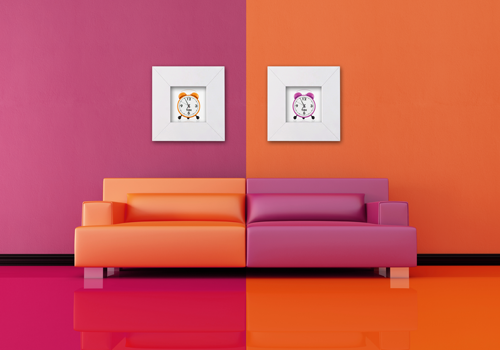
The term 'pop art' was invented by British curator, Lawrence Alloway, in 1955 to describe a new form of 'popular' art. It was a movement characterized by the imagery of consumerism and popular culture. It emerged in both New York and London during the mid-1950s and became the dominant avant-garde style until the late 1960s.
It was a descendant of Dada, a nihilistic movement in the 1920s that ridiculed the seriousness of contemporary Parisian art, the political and cultural situation that had brought war to Europe. Marcel Duchamp, the champion of Dada in the United States was the most influential figure in the evolution of this art.
Pop art is characterised by bold and vibrant block colours with everyday imagery. The pop iconography drew inspiration from ads, consumer product packaging, photos of film stars, pop stars, comic strips and road signs.
Works of Roy Lichtenstein, Andy Warhol, Claes Oldenburg, Tom Wesselman, James Rosenquist, Robert Indiana, David Hockney and Peter Blake had a powerful impact and rejected both the supremacy of the 'high art' of the past and the pretensions of contemporary avant-garde art. It initially faced criticism and was called vulgar, non-aesthetic and sensational. To its proponents, who were a minority in the art world, it was something that brought together both the connoisseurs and untrained viewers. Though pop art was not taken seriously by the public, it found critical acceptance as a form of art for the highly technological, mass-media oriented society of Western countries.
Some of the more striking forms that pop art took were Andy Warhol's meticulously literal paintings and silk-screen prints of soap cartons, soup-can labels and rows of soft-drink bottles; Roy Lichtenstein's stylized reproductions of comic strips that used the colour dots and flat tones of commercial printing; Claes Oldenburg's soft plastic sculptures of objects like typewriters, bathroom fixtures and gigantic hamburgers; George Segal's constructed tableaux that featured life-sized plaster-cast figures placed in actual environments retrieved from junkyards, just to name a few.
Today, pop art is accepted worldwide and has even crept into the home décor industry with bright gestures, striking markings and bold colours. It's an exciting style of home décor that begs to be noticed. If you are looking for décor elements that look both funky and unique, pop art is a great idea!